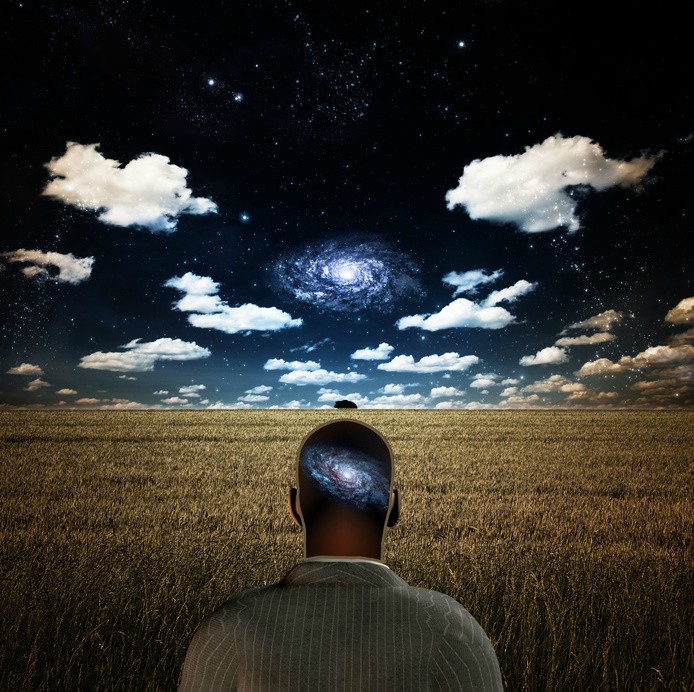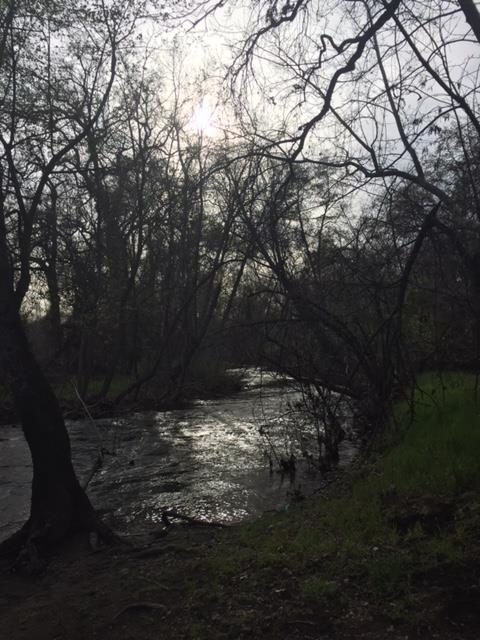In quick succession along the short path after the footbridge to the picnic site, there were three close encounters with animals. First, a stipple-winged woodland hawk alighted from the nearest branch, spreading its great wings and gliding to the next nearest branch just 20 meters away.
The majestic raptor didn’t fly away when I stood beneath it, and you could feel the animal’s intense awareness of its environment before dropping from the branch and soaring off.
As I approached the site a deer poked its head out from the bushes a few feet away. It was a yearling, with no fear of people because they aren’t hunted in the area. Even so it’s strange to be face to face with a free-ranging animal in a municipal park.
Finally, a pair of plump mallards stood at the edge of the swollen stream as I entered the site. They began to go downstream, but turned around and stayed. Just three or four steps away, they did their duck things for half an hour—foraging in the sandy bottom, preening, and even sleeping.
The male had the striking plumage of the species, with a bluish-green florescent neck and a dashing chevron on its wings. Whenever the female moved more than a few feet away, it would follow. They were both healthy, and she looked close to giving birth to a new batch of chicks.
Comically, when the ducks did enter the fast-flowing creek, they paddled in such a way that the current carried them sideways downstream.
People occasionally passed by on the path behind me, and one felt affinity and affection for them. An older couple stopped a short distance away to look at a trio of relatively small redwoods. They laughed at a private joke, and continued on. The woman, small with a slight frame, had long, completely gray hair. There was a spryness about her.
Fifteen minutes later they were back. ‘I wondered if you’d be able to get through,’ I said, referring to the dip in the path that fills with water after a heavy rain. “No bridge over troubled waters,” the woman said with a smile, and I laughed.
A physicist’s absurd question again came to mind: “When will be able to upload our brains?” Failing to make the distinction between mind and brain, between thought and awareness, is probably the greatest existential error of our age.
Consider Emily Dickinson’s poem, “The brain is wider than the sky.”
The Brain — is wider than the Sky —
For — put them side by side —
The one the other will contain
With ease — and You — beside —
The Brain is deeper than the sea —
For — hold them — Blue to Blue —
The one the other will absorb —
As Sponges — Buckets — do —
The Brain is just the weight of God —
For — Heft them — Pound for Pound —
And they will differ — if they do —
As Syllable from Sound —
Our thoughts are not who we truly are, nor even the operating program we call ‘my self.’ Awareness beyond thought, self and time is what makes us human beings.
Can the brain be anchored in attention, undivided, undirected attention? Clearly that, not concentration, and certainly not any method or technique is the action that quiets the mind-as-thought, and opens the door to the numinous in the brain.
The observer, that illusory, infinitely regressive entity that always stands apart, is never neutral. It is always judging and interpreting from the past, from conditioning, experience and memory.
Therefore sit quietly outdoors, let your senses be open to the present, and ask without answering: Is the observer operating? You’ll discover the brain has the capacity for observing without the observer.
Psychological time is the false continuity of self and thought. Therefore once the separate observer falls away in passive awareness quicker than thought, ask: Is time operating?
When time ends one sees, beyond words, what Emily Dickinson meant by “the brain is just the weight of God.”
Martin LeFevre


